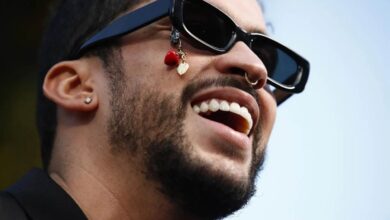Do you feel pain when you breastfeed? You could suffer from mastitis
Do you know what mastitis is? In LatinAmerican Post we tell you more about this disease

According to a report by the World Health Organization (WHO), mastitis "is an inflammatory condition of the chest, which may or may not be accompanied by infection." Specifically, and according to Mayo Clinic, "mastitis usually causes pain in the breasts, and some women experience hard nipples."
Leer en español: ¿Sientes dolor cuando amamantas? Podrías sufrir de mastitis
Also, mastitis is suffered by nursing mothers, usually in the first weeks after giving birth (during the 6th and 12th), but care must be taken because it can occur throughout the lactation stage. It is important to say that mastitis is a frequent condition and represents an important cause of avoidable avoidance of breastfeeding, as indicated by the study "Mastitis, a day".
Which are the symptoms?
According to Mayo Clinic, the symptoms of this disease include breast tenderness and temperature at the touch, feeling of general malaise, swelling of the breasts, pain or a continuous burning sensation or during breastfeeding, redness of the skin and present fever of more than 38.3 ° C.
You may be interested: 6 myths about pregnancy that you should not believe
Causes
Mastitis can occur due to two factors: stasis of mastitis and infection. The first is due when the milk is not removed correctly from the breast, this can happen at any time when the child does not extract the milk that is produced well from one part or from the whole breast, as indicated by the study of the World Health Organization. health.
In addition, other causes can be:
- A bad grip of the child to the chest
- Ineffective suction
- Restriction of the frequency or duration of milk intake
- Blocking the milk ducts
On the other hand, an infection can occur due to the presence of different bacteria that are found on the surface of the skin and the baby's mouth. These organisms can enter the milk ducts "through a lesion or crack in the skin of the nipple or through an opening in the milk duct," as indicated by Mayo Clinic. However, do not worry! Your baby is protected by antibiotic properties.
Treatments
The most important thing is that if you notice any symptoms call your doctor to prescribe the necessary care. However, we can give you some recommendations to try to alleviate the pain.
-
Breastfeed your baby Yes, it can be painful, but it is necessary. According to Babycenter, giving your child a breast often helps keep the affected breast without milk.
-
Massage the chest. It is good to perform gentle massages from the affected area to the nipple.
-
Cloths of cold water. To combat the heat of the affected area you can put cold water cloths. These will also help you to relieve the swelling.
-
Goodbye to the tight underwear. Avoid using tight bras at all costs to not generate pressure and more pain in your breasts.
It can be avoided?
Of course! Among the recommendations is:
- Start breastfeeding your baby, after the first hour of delivery
- Observe that your baby is well grasped by the chest
- Breastfeed without putting a limit on your baby
- Avoid wearing tight clothes
- It is very important to eat well and rest
- Massage and local heat before breastfeeding
- If after breastfeeding you notice that the emptying is incomplete, remove manually or with extractor the remaining milk
- Hygiene is crucial so that bacteria can not enter the milk duct, so wash your hands!
LatinAmerican Post | Laura Viviana Guevara Muñoz
Translated from "¿Sientes dolor cuando amamantas? Podrías sufrir de mastitis"
Listen to this article
Your browser does not support the audio tag.





